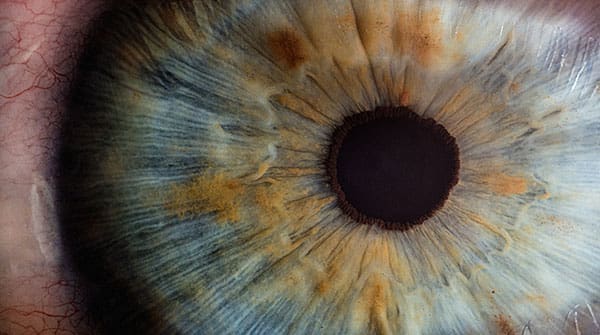 Our eyes become fatigued when we spend too much time in front of our computers without configuring our work environment appropriately. I recently focused on this problem, pun intended, when I suffered horrible computer withdrawal while recovering from an eye operation.
Our eyes become fatigued when we spend too much time in front of our computers without configuring our work environment appropriately. I recently focused on this problem, pun intended, when I suffered horrible computer withdrawal while recovering from an eye operation.
Here’s how you can protect your eyes in our world dominated by long working periods and playing at monitors of all shapes and sizes.
Blink more
Most of us blink less often when working at the computer. Reduced blinking frequency can dry out your eyes. Ventilation or air conditioning can also dry out your eyes.
Frequent blinking moisturizes and refreshes your eyes. Deflecting the air out of the ventilation slot of the air conditioner can also help.
Take a break
If you work at the computer for a long, your eyes need a break. So leave your workstation or switch off your smartphone regularly.
“I recommend that everyone take at least a five-minute break from their monitors every hour,” says Dr. Natalia Figueiredo, Vitreoretinal Fellow at Calgary Retina Consultants. “When we focus on close objects, our eye muscles work at maximum contraction. Therefore, they need time to relax by focusing on more distant objects at least 6 meters away.”
Improve the lighting
|
Related Stories |
|
|
| How to prevent ransomware attacks on your computer
|
| Ten technology tips to improve work from home
|
| Ten top updates for Windows 10
|
Excessive fluorescent lighting and sunlight streaming in from a window can cause glare. Also, placing your monitors directly in front of a window or a white wall can cause problems. These lighting problems strain your eyes by increasing the effort of your eyes to see text and images on your monitors.
Reduce indoor and outdoor lighting by closing your blinds and unscrewing some of your fluorescent tubes. Use an adjustable desk lamp if you need targeted light for reading or writing.
Check your prescription
If you wear glasses or contacts, the eye strain can be caused by a poor fit or an outdated prescription.
Visit your optometrist to check your eyes against the prescription of your glasses to see if a change will help you see better and reduce your eye strain.
Adjust your monitor settings
The default settings of your monitor are usually optimized for the best viewing. Nonetheless, you may want to experiment with your brightness, contrast and sharpness settings to achieve a comfortable combination of levels for you.
My BenQ EW2780 monitors offer additional settings, including flicker-free technology, low blue light, brightness intelligence, colour weakness, epaper mode, and eye reminder. Such choices are more than enough to meet my needs and should help you minimize eye strain.
You can adjust the screen brightness on your iPhone or iPad by opening the Control Center on the home screen. Whether you swipe up or down depends on the model you have. Then move the brightness slider up or down. On Android smartphones, you swipe down from the top of the screen to reveal the Notification Shade.
Adjust your text size
Sometimes text on a monitor is too small to be readable without squinting or straining the eyes.
Enlarging the text size for easier reading can lead to more comfort and less eye strain. You may want to experiment with these size settings:
- Windows > Settings > Display > Scale and layout. The default value is 225%.
- Microsoft Office tools offer a Zoom slider at the bottom right of the window. The default value is 100%.
- On a Mac, Command + or – increases or decreases the text size in applications.
- Web browsers use CTRL on Windows or Command on a Mac followed by + or – to cycle through six settings that increase or decrease text size and the graphics on web pages. The default value is Medium.
- In the Chrome web browser, you can resize text and graphics using Settings > Appearance > Page zoom. The default value is 100%.
Use a document holder
If you use printed material on your desk while working at your computer, you need to adjust your eyes and rotate your neck and head frequently.
Place the printed material on a document holder to avoid the associated strain. Place the holder between the keyboard and the monitors or to the side of one monitor.
Improve your ergonomics
A poorly designed sitting position in front of your computer can cause many problems, including eye strain.
Position your monitor directly in front of you, about an arm’s length away. Position the height of your chair so that the top of the monitors is at eye level.
For more details, read this Mayo Clinic Eyestrain article.
Yogi Schulz has over 40 years of information technology experience in various industries. Yogi works extensively in the petroleum industry. He manages projects that arise from changes in business requirements, the need to leverage technology opportunities, and mergers. His specialties include IT strategy, web strategy and project management.
For interview requests, click here.
The opinions expressed by our columnists and contributors are theirs alone and do not inherently or expressly reflect the views of our publication.
© Troy Media
Troy Media is an editorial content provider to media outlets and its own hosted community news outlets across Canada.


